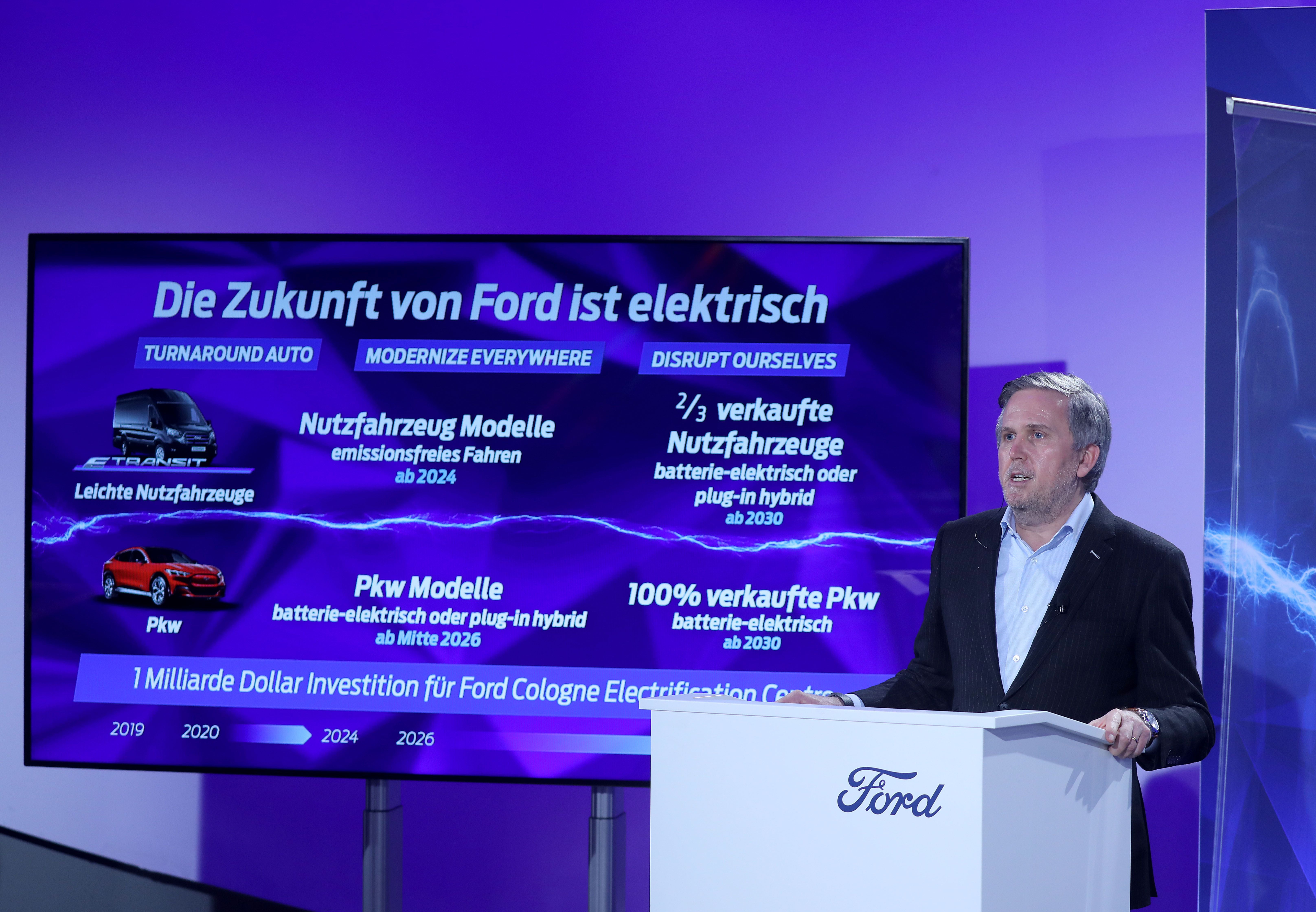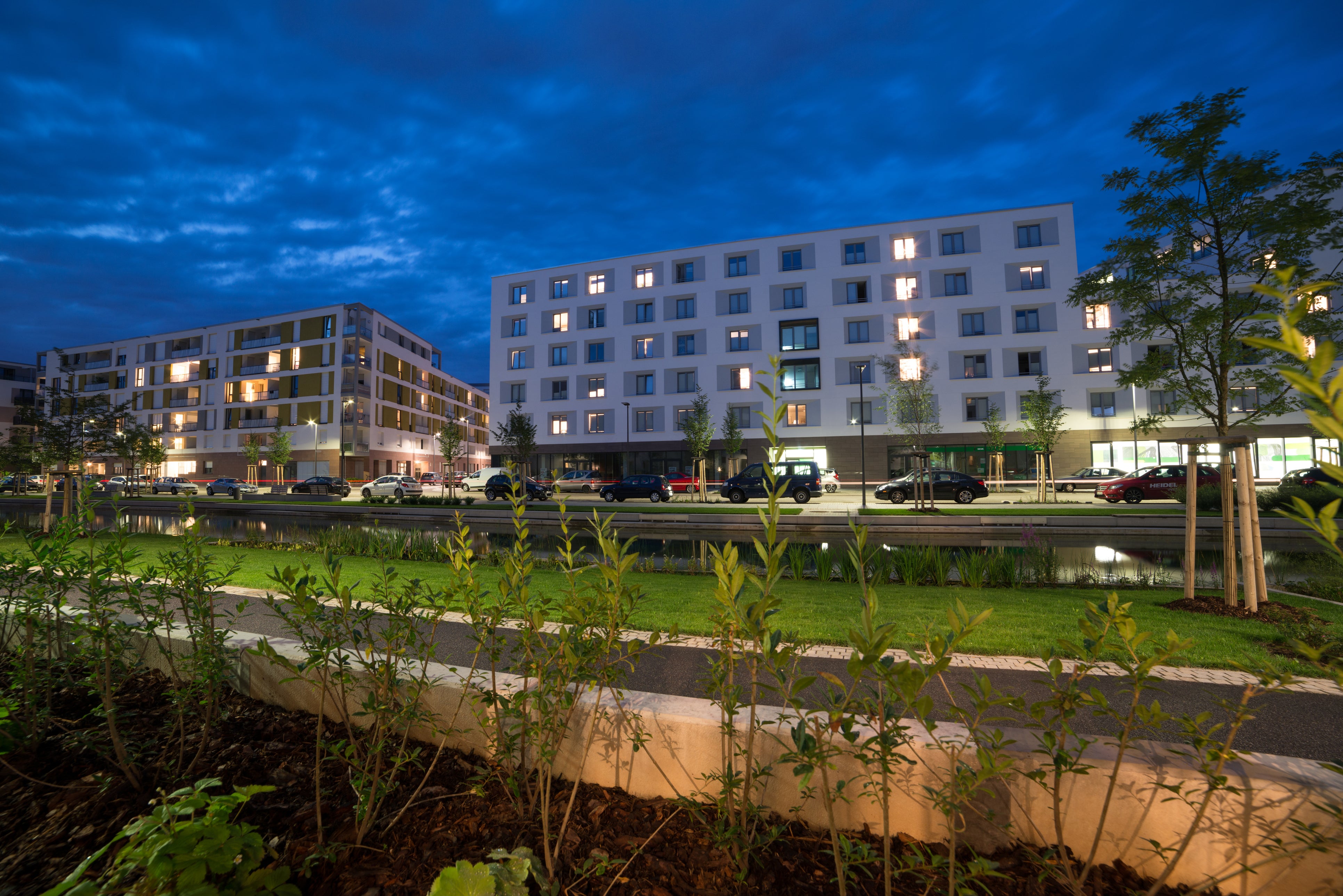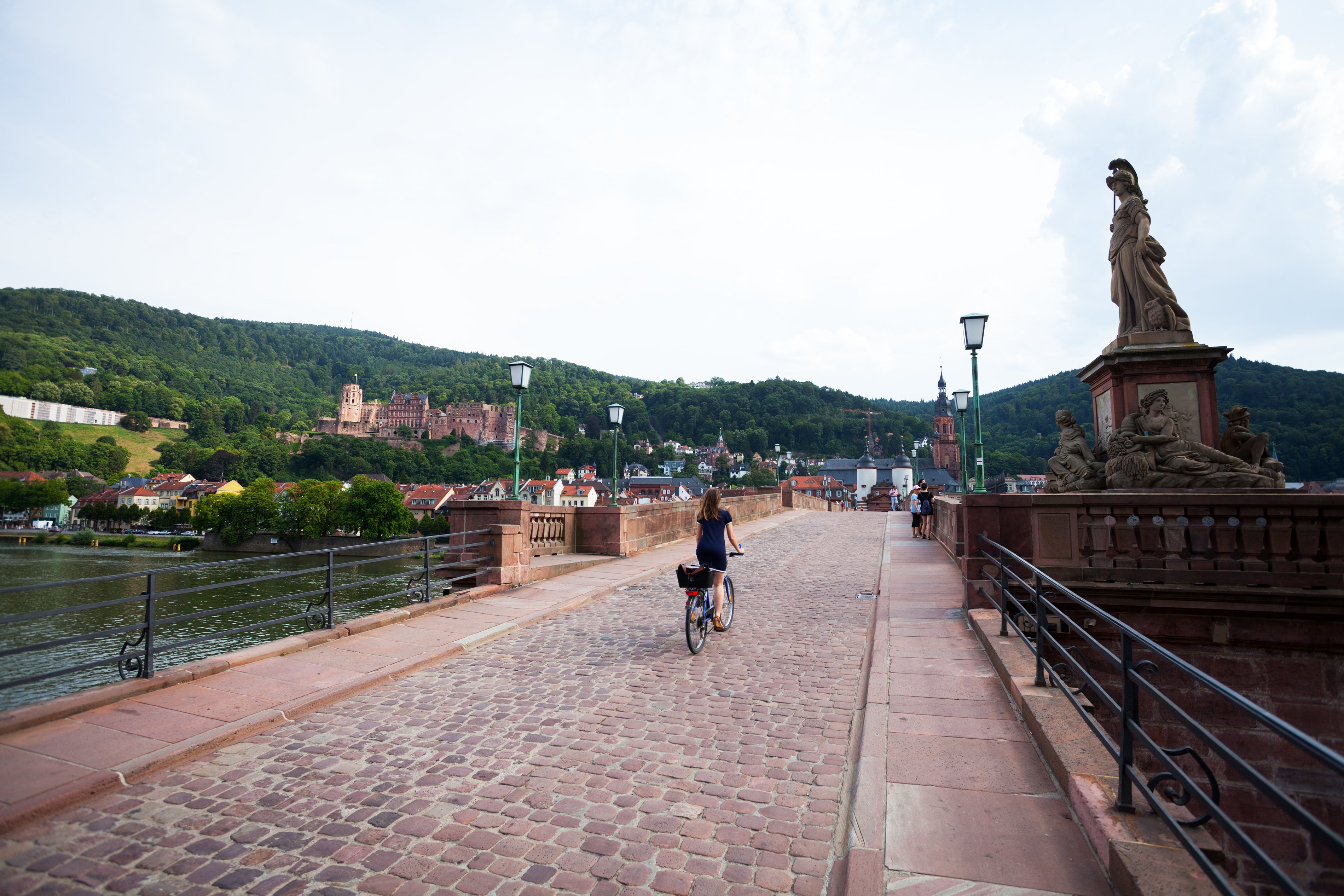In Heidelberg, cars are not welcome any more
A fleet of hydrogen-powered buses, a network of bicycle superhighways, and free public transport for a year if you give up your cars – this is how Heidelberg is getting rid of cars, writes Jack Ewing

Your support helps us to tell the story
From reproductive rights to climate change to Big Tech, The Independent is on the ground when the story is developing. Whether it's investigating the financials of Elon Musk's pro-Trump PAC or producing our latest documentary, 'The A Word', which shines a light on the American women fighting for reproductive rights, we know how important it is to parse out the facts from the messaging.
At such a critical moment in US history, we need reporters on the ground. Your donation allows us to keep sending journalists to speak to both sides of the story.
The Independent is trusted by Americans across the entire political spectrum. And unlike many other quality news outlets, we choose not to lock Americans out of our reporting and analysis with paywalls. We believe quality journalism should be available to everyone, paid for by those who can afford it.
Your support makes all the difference.Eckart Wurzner, a mayor on a mission to make his city emission-free, is not terribly impressed by promises from General Motors, Ford and other major car manufacturers to swear off fossil fuels.
Not that Wurzner, the mayor of Heidelberg, is against electric cars. The postcard-perfect city in southern Germany gives residents who buy a battery-powered vehicle a bonus of up to €1,000. They get another €1,000 if they install a charging station.
But electric cars are low on the list of tools that Wurzner is using to try to reduce Heidelberg’s impact on the climate, an effort that has given the city, home to Germany’s oldest university and an 800-year-old castle ruin, a reputation as a pioneer in environmentally conscious urban planning.
Wurzner’s goal is to reduce dependence on cars, no matter where they get their juice. Heidelberg is buying a fleet of hydrogen-powered buses, building a network of bicycle “superhighways” to the suburbs, and designing neighbourhoods to discourage all vehicles and encourage walking. Residents who give up their cars get to use public transport free for a year.
“If you need a car, use car-sharing,” Wurzner says in an interview at Heidelberg’s Baroque-style city hall, which was nearly deserted because of the pandemic. “If you can’t use car-sharing because you’re living too far outside and there is no mass transportation, then use the car, but just to the train station and not to downtown.”
Heidelberg is at the forefront of a movement that is probably strongest in Europe but has a presence in plenty of communities around the world, including US cities like Austin, Texas, and Portland, Oregon. The pandemic has given many citizens a taste of what densely packed urban areas would be like without so much traffic, and they like it.
Recent vows of fossil-fuel abstinence by car makers, including GM, Ford Motor and Jaguar Land Rover, are a tacit admission that their product will no longer be welcome in cities at all unless they radically clean up their act. Even then, the tide of history may be against them as urban planners try to free up space now occupied by vehicles.
Dozens of cities in Europe, including Rome, London and Paris, plan to limit city-centre traffic to emission-free vehicles during the next decade. Some, like Stockholm and Stuttgart, the German home of Mercedes-Benz, already ban older diesel vehicles.
Electric cars are also expensive. At current prices, they are out of the reach of lower-income residents. Political leaders need to offer affordable alternatives
National governments are adding to the pressure. Ireland, the Netherlands, Sweden and Slovenia say they will ban sales of internal-combustion cars after 2030. Britain and Denmark say they will do so in 2035, allowing only hybrids after 2030, and Spain and France in 2040.
Such declarations of intent “certainly push vehicle manufacturers,” says Sandra Wappelhorst, a senior researcher at the International Council on Clean Transportation in Berlin, who tracks plans by companies and governments to phase out internal combustion.
Heidelberg, a city of 160,000 people on the Neckar river, which was threatening to overflow its banks recently after unusually heavy rain, provides a glimpse of how an automobile-light city of the future might look.
It is one of only six cities in Europe considered “innovators” by C40 Cities, an organisation that promotes climate-friendly urban policies and whose chair is Michael Bloomberg, the former mayor of New York. (The others are Oslo, Norway; Copenhagen, Denmark; Venice, Italy; and Amsterdam and Rotterdam in the Netherlands.)
Among the city’s measures to make cars irrelevant are building bridges that allow cyclists to bypass congested areas or cross the Neckar without having to compete for road space with motor vehicles.
Buildings are also important. The city has cut the energy consumption of schools and other city buildings by 50 per cent in the last decade – no small feat when many of the structures are hundreds of years old.

Battery-powered vehicles do not pollute the air, but they take up just as much space as petrol models. Wurzner complains that Heidelberg still suffers with rush-hour traffic jams, even though only about 20 per cent of residents get around by car. The rest walk, cycle or take the electric buses that ply the narrow, cobbled streets of the city’s old quarter.
“Commuters are the main problem we haven’t solved yet,” Wurzner says. Traffic was heavy on a recent weekday, pandemic notwithstanding.
Electric cars are also expensive. At current prices, they are out of the reach of lower-income residents. Political leaders need to offer affordable alternatives like public transport or bicycle routes, says Wappelhorst.
“It’s not only about cars in the end,” she says. “You need the whole package.”
Heidelberg’s mile-long pedestrian zone, usually thronged with tourists but nearly empty recently because of the pandemic, is said to be Germany’s longest. But the best showcase for the city’s emission-free ambitions is built on top of a former rail-freight yard on the edge of town.
In 2009 work began on the Bahnstadt, or “Rail Town”. The vacant piece of land, which had to be cleared of three unexploded bombs from the Second World War, offered planners a blank slate with which to create a climate-neutral neighbourhood.
The modern apartment buildings, architecturally the opposite of Heidelberg’s Baroque city centre, are so well insulated that they require almost no energy to heat. What warmth they do require comes from a plant just outside the neighbourhood that burns waste wood.
Cars are not banned from the Bahnstadt, but there is almost no traffic. Most streets are dead ends. Apartment buildings are arranged around generous courtyards with playgrounds and connected by walkways. The one street that cuts through the triangular neighbourhood has a speed limit of 30 kmph (less than 20 mph). Bicycles have the right of way.

The Bahnstadt, with 5,600 residents and still growing, has its own preschool and primary school, a community centre, two supermarkets, several bakeries and cafes, two bicycle shops and six car-sharing stations, each with two electric vehicles. Heidelberg’s main train station and a tram stop are a short walk away, and a cycle path follows the route of an old railway line to the city centre.
There are also jobs. The Bahnstadt has several large office buildings whose tenants include the German subsidiary of Reckitt Benckiser, the maker of consumer products including Clearasil and Woolite.
“The idea is to get back to the classic early city, where living and working are closely intertwined,” says Ralf Bermich, head of Heidelberg’s Office for Environmental Protection.
Dieter Bartmann, who in 2012 was one of the first people to move into the Bahnstadt, owns a car but estimates he drove it about 20 km, or 12 miles, in January, mostly to the supermarket to stock up on staples that were too bulky to carry on his bicycle.
Wurzner, who drives an experimental hydrogen-powered Mercedes, acknowledges that not every city can afford to do all the things that have made Heidelberg a showcase
Bartmann, a former manager at SAP, a software company whose headquarters are in nearby Walldorf, is sitting on a bench along a promenade that borders one side of the Bahnstadt. The area is blocked to motorised traffic and looks out on farmland. Runners, cyclists, and people on inline skates glide by.
It looks idyllic on a sunny winter day, but Bartmann, former chair of the Bahnstadt residents’ association, says there are still things that could be improved.
He would like to do more to keep cars out – for example, by blocking off the one through street. Some buildings have underground garages, but these were not built with electric cars in mind and do not accommodate charging points easily. The paved promenade is not wide enough, Bartmann says, leading to conflicts between cyclists and pedestrians.
But, he adds, “this is high-level complaining. You have to be realistic.”

Some complain that Heidelberg is not as green or as bicycle-friendly as its reputation would have it. Paul Baur, an American who has lived in the city since 2007 and commutes by bicycle to a job out of town, says his route forces him to ride between parked cars and a tram line.
“You can decide if you want to die by tram or car door,” Baur says in an email.
“Cars rule here,” he continues. “Yes, the city is making progress, but I think it is too little and almost too late.”
Wurzner, the mayor, says his goal is to make Heidelberg climate-neutral by 2030, an ambitious target. The city plans to generate its own wind and solar power and is installing a hydrogen filling station for a fleet of 42 buses powered by hydrogen fuel cells. The city wanted to order hundreds of the buses, but Wurzner complains that the bus-makers have been slow to respond to demand for emission-free transportation.
“We can’t get enough,” he says. (Daimler, which makes buses in Neu-Ulm, about two-and-a-half hours from Heidelberg, does not yet sell a city bus powered solely by hydrogen.)
Wurzner, who drives an experimental hydrogen-powered Mercedes, acknowledges that not every city can afford to do all the things that have made Heidelberg a showcase for environmentally friendly planning. The University of Heidelberg, one of Germany’s most prestigious universities, has spawned numerous research institutes that provide a solid tax base. The residents tend to be well educated and affluent.
“It’s true the city is in a quite good financial situation,” Wurzner says.
But he adds that he often hears from mayors in Europe, the United States and Asia who want to emulate Heidelberg’s strategy.
“We all know we have to go in this direction,” he says. “It’s just a question of how fast.”
© The New York Times




Join our commenting forum
Join thought-provoking conversations, follow other Independent readers and see their replies
Comments